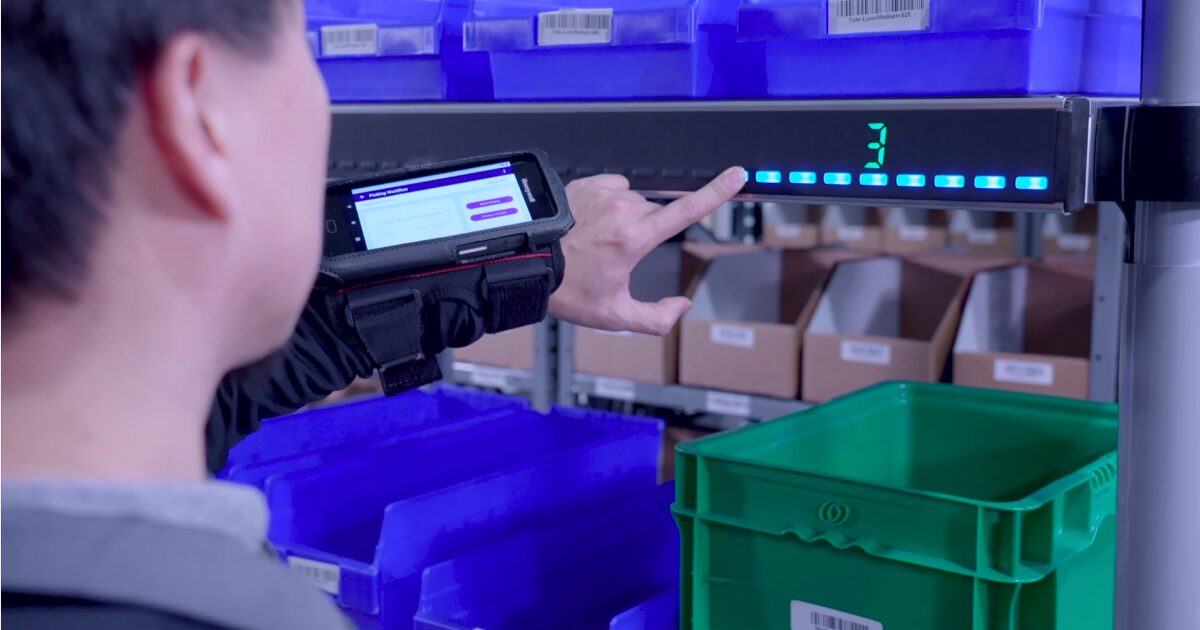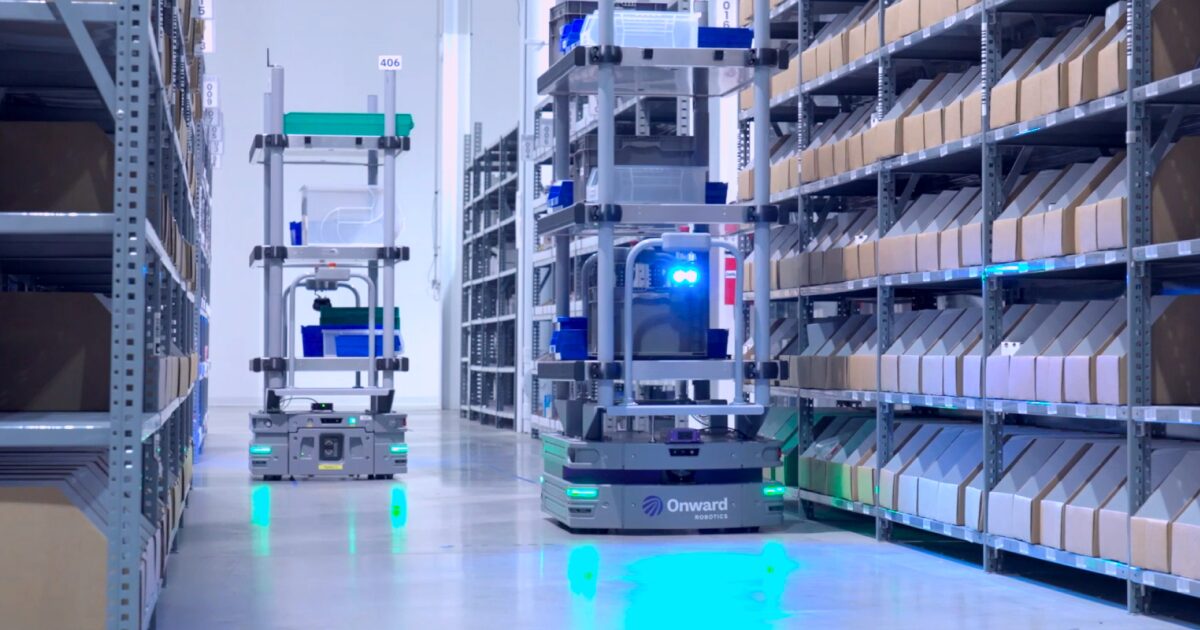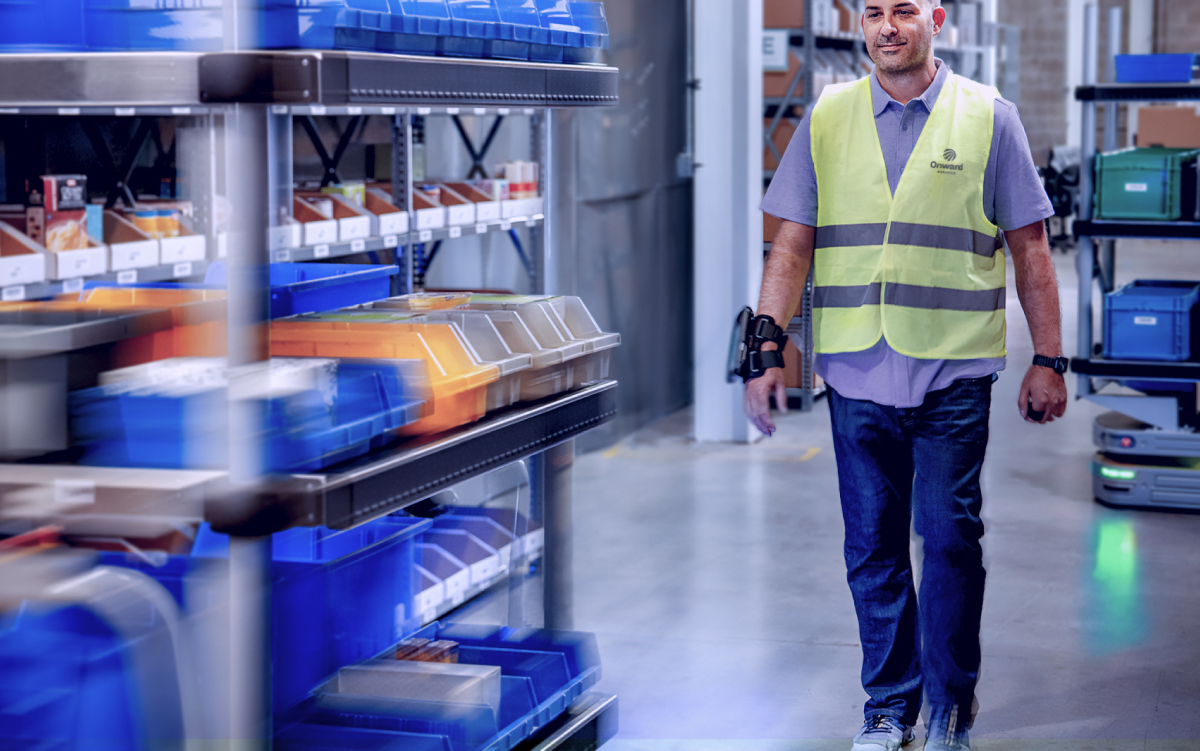Tackling the Labor Shortage with Robot-Human Collaboration in Warehousing and Distribution Centers
Insights from ProMat 2025: How Robot-Human Collaboration is Revolutionizing Fulfillment Operations by Independently Optimizing Workflows

APRIL 10, 2025
The warehousing and distribution industries are experiencing a significant shift. As e-commerce continues to surge, the demand for faster, more accurate fulfillment grows—but the labor force required to meet these demands is dwindling. The labor shortage has become a persistent challenge for many businesses in the sector, leading to increased hiring difficulties, higher labor costs, and reduced efficiency.
In response to these challenges, robot-human collaboration is emerging as a transformative solution that not only alleviates labor shortages but also enhances operational efficiency, accuracy, and safety within warehouses and distribution centers.
Why The Labor Shortage is a Major Concern for Warehousing and Distribution
The labor shortage has been a growing concern across industries, but its impact is particularly pronounced in the warehousing and distribution sector. The demands of e-commerce, including rapid delivery times and the increasing volume of orders, are pushing warehouses and distribution centers to their limits. Yet, attracting and retaining workers in an environment that often involves physically demanding tasks, long hours, and high turnover rates has become increasingly difficult.
Some of the key challenges related to the labor shortage include:
Higher Labor Costs
With fewer workers available, wages are rising, making labor a more expensive part of operations.
Decreased Productivity
With a limited workforce, businesses struggle to maintain the same level of productivity and meet customer expectations for speed and accuracy.
Increased Pressure on Workers
The reduced workforce places greater pressure on employees to meet output goals, potentially leading to burnout, injuries, and safety risks.
Seasonal Volatility Challenges
With limited workforce availability, warehouses struggle to scale operations during peak season. This inability to quickly adjust staffing can lead to missed SLAs and deteriorating customer satisfaction.
The Role of Robot-Human Collaboration in Overcoming Labor Shortages
Robot-human collaboration is a game-changer in the warehousing and distribution industry. Rather than replacing human workers, robots like Lumabot are designed to assist and enhance human capabilities, allowing them to work together more effectively. This collaboration helps overcome the limitations of a reduced labor force while optimizing workflows and increasing operational efficiency.
Here’s how robot-human collaboration benefits warehouses and distribution centers:

Filling Labor Gaps: Robots can handle repetitive and physically demanding tasks, reducing the burden on human workers. This helps address labor shortages without sacrificing efficiency.

Improved Accuracy and Speed: Robots like Lumabot can quickly and accurately complete tasks such as picking, sorting, and transporting goods, reducing errors and speeding up fulfillment times.

Enhanced Safety: By automating dangerous tasks, robots can minimize the risk of injury for workers, promoting a safer work environment.

Scalability: With robots, warehouses can scale operations quickly without needing to hire additional workers, providing flexibility in meeting changing demands.
Meet Me Automation: Optimizing Workflows Between Human Pickers and Lumabot AMRs
One of the most exciting advancements in robot-human collaboration is Meet Me automation by Onward Robotics. This innovative solution is designed to optimize the workflow between human pickers and Lumabot, a cutting-edge robotic solution for automated order fulfillment.

Efficient Task Distribution
Meet Me automation intelligently divides tasks between human workers and robots, ensuring that each is performing the tasks they’re best suited for. Humans handle more complex or decision-based tasks, while robots like Lumabot focus on repetitive tasks like picking and transporting goods. This division of labor improves efficiency and helps reduce worker fatigue.
Enhanced Collaboration
The solution is designed for seamless collaboration. When a human picker and Lumabot work together, they each have a clear role in the process. While the robot transports items or brings them closer to the picker, the picker can focus on more value-added tasks such as organizing or preparing the order for shipping. This dynamic collaboration speeds up the overall workflow and ensures smooth coordination in the warehouse.
Optimized Route Planning

Meet Me automation uses advanced algorithms to optimize the paths Lumabot takes within the warehouse. By calculating the most efficient routes, the system ensures that Lumabot avoids obstacles and minimizes unnecessary travel time, reducing wait times for human workers and boosting productivity.
Real-Time Data for Continuous Improvement
The system collects and analyzes real-time data, providing valuable insights into the performance of both robots and human workers. This data helps warehouse managers make informed decisions on task allocation, identify bottlenecks, and improve the overall workflow. As a result, businesses can continuously optimize their operations to stay ahead of demand and address labor shortages more effectively.

Scalability and Flexibility
Whether a warehouse is dealing with high seasonal demand or unexpected surges, Meet Me automation can scale with ease. The solution can quickly adjust to changing workflows by reallocating tasks between workers and robots, ensuring operations remain efficient and responsive without the need to hire additional staff.
Key Advantages of Meet Me for Today’s Warehouses
The integration of robot-human collaboration through Meet Me automation is not just a temporary fix for labor shortages—it’s a long-term strategy for optimizing fulfillment operations. With Lumabot working hand-in-hand with human pickers, warehouses can maintain high levels of productivity, reduce operational costs, and improve worker safety.
Key advantages include:
- Reduced Dependency on Manual Labor: As the labor shortage continues, Meet Me automation allows businesses to reduce their dependency on manual labor without compromising on speed or accuracy.
- Improved Operational Efficiency: The collaboration between robots and humans accelerates the picking, sorting, and shipping process, ensuring faster fulfillment times and better service for customers.
- Long-Term Scalability: Meet Me automation is designed to grow with your business. It adapts to changes in demand and warehouse size, ensuring that your operations can scale without the need for a constantly expanding workforce.
The Future of Warehouse Operations is Collaborative

As the labor shortage continues to challenge the warehousing and distribution sectors, robot-human collaboration is proving to be a powerful solution. With Meet Me automation, Onward Robotics is leading the way in optimizing workflows and enhancing productivity, enabling businesses to stay competitive and meet the growing demands of e-commerce.
By implementing robotic solutions like Lumabot and integrating them with human workers, businesses can navigate labor shortages, reduce operational costs, and enhance fulfillment accuracy. The future of warehouse operations is collaborative, and Meet Me automation is setting the stage for a more efficient, scalable, and sustainable future.
Don’t miss the other valuable insights from our ProMat 2025 series: “Finding the Right Picking Solution to Boost Your Fulfillment Throughput” and “The Road to Faster Fulfillment.” Together, these blogs provide a comprehensive roadmap for revolutionizing your warehouse operations with Meet Me automation—helping you coordinate people and robots for continuous, fast, and efficient fulfillment despite labor challenges.


